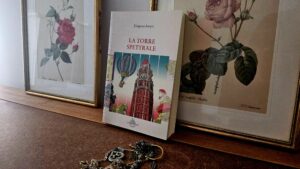Do you work in the construction industry? Have you ever found yourself covering up something in a space that needed to open in five minutes? I know I did, and I know this is why all my sympathies go to the poor guys painting the roses red in the opening of the chapter where we finally meet the Queen of Hearts. They also have one of the catchiest songs in the Disney movie.
Because we know
they’ll cease to grow
(in fact, they’ll soon be dead)
and yet we go ahead
painting the roses red.
To be fair, the scene goes as in the movie: the gardeners are still painting when the King and Queen of Hearts arrive and… well, that doesn’t go well for them.
Carroll even finds a way to mock the Dutch, which is something that after spending a year in Amsterdam always finds me in favour. Number two (illustrated by Tenniel as a two of spades but usually turned into the two of Clubs because in some languages, like Italian, they’re called Flowers… and, in the text, they’re clubs as well, so I guess Tenniel didn’t play cards) is accused of mistaking a bulb for an onion and, according to Bruce Bevan, this echoes the incident of an English traveller as retold by Charles Mackaray’s 1841 Extraordinary Popular Delusions and the Madness of Crowds, a book that could use an updated edition. The book has a chapter on the so-called Tulip Mania and, according to Mackaray, once an English gentleman found himself in Holland and picked up a tulip root, thinking it an onion, beginning to gleefully peel it in the streets. The bulb was worth four thousand florins and the poor guy went to jail, as he was unable to pay such a handsome debt.
There are beautiful illustrations of the scene and I’m just trying not to show you the Queen, as I want to give Her Majesty her own post, but some of them are just too fitting. Like this beautiful one by Greg Hildebrandt (you might know him for his beautiful illustrations of The Hobbit) where the tree is shown in the background, half-painted, and the audacious perspective emphasizes the gardeners falling flat on their faces.
Another awesome one is of course by Arthur Rackham, who is a tad more dramatic with the half-painting of the rose tree, but definitely more accurate from a botanical point of view. We’ll skip for the moment his depiction of the Queen, but he’s also one of the few who takes after Tenniel in not showing Alice in this scene, as she gets noticed a moment later.
Here Rackham doesn’t show us the cards’ suit (clovers vs. spades for instance) as the text isn’t clear on that and there are different opinions. An even more conceptual take on the scene is adopted by Kim Min Ji in this beautiful illustration from 2009, in which the three gardeners are flat-out on the ground but more cards can be seen towering in the distance, a premonition of the final apocalyptic scenes of the book.
Alison Jay follows in the same footsteps, though the approach is far more geometrical, from the cards to the Italian garden in the background, including the King and Queen topiary that resembles the chess pieces and throws us right into the Through the Mirror sequel.
Alexander Koshkin, on the other hand, decides to mess it up completely and gives us a Two of Diamonds, a Six of Hearts and a Seven of Spades. The roses are also rather peculiar and every gardener has a special hat. Overall the illustration is very particular.
It must be a Russian thing because Maxim Mitrofanov also presents them in different suits: what looks like the three of diamonds, one that can only be the seven of clubs and the third one is not facing us, but we can see from the headgear that he is a spade.
The cards are all spades, however, in this drawing by Nick Hewetson, with a strikingly caricatural approach, though a couldn’t find when and how this illustration was produced.
We can also count on Marjorie Torrey to have them all spades: she was an American illustrator and writer who also worked on Peter Pan and published under the name of Torrey Bevans. Her illustrations feature a green-dressed Alice, with a red hairband and blonde-reddish hair following in the footsteps of colleagues like Mabel Lucie Attwell. Though it never says so, Torrey decides to give a disproportion between the gardeners and the roses, as an additional imbalance of both their nature and their tasks. Sizes, as we know, matter a lot in Wonderland, though not in the way one might think.
A similar disproportion features in this lovely canvas by Edwin John Prittie, from 1923. I could only find this reproduction with the canvas texture and I would be grateful for any better picture: Alice here is the same Alice we are used to seeing in the Disney movie, with blonde hair and a black hairband, blue dress with a white apron, white socks and black shoes. The three cards however are interestingly dressed in undergarments in three different colours and we are treated with the detail of additional flowers in the background.
The last illustration I’d like to show you for today has a different flavour and is from Margaret Tarrant: she decides to show us the initial moment in which Alice finally walks through the Queen’s garden, in awe of its beauty. It’s a moment of satisfaction that in fact never comes, as Alice jumps from curiosity to curiosity, never really satisfying the previous one before jumping onto the next one, but we all need a moment of serenity, don’t we? So there you go: Alice wandering in the beautiful garden.


















No Comments